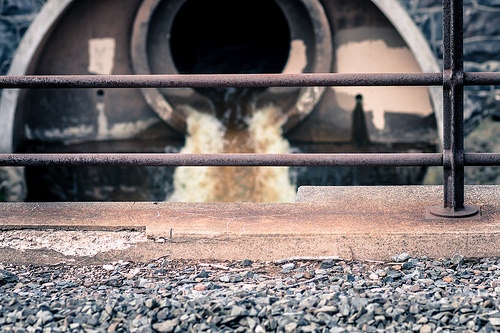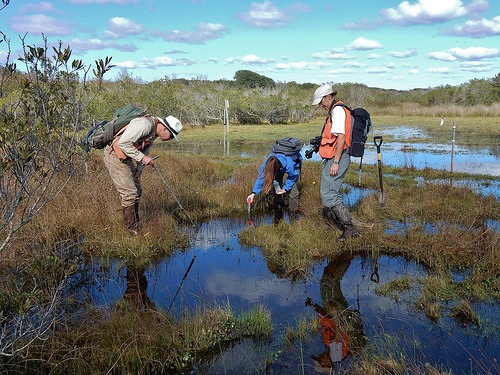In November 2015, the Environmental Protection Agency (EPA) adopted significant amendments to the Agricultural Worker Protection Standard (WPS) that EPA administers using its Federal Insecticide Fungicide and Rodenticide Act (FIFRA) authority -- FIFRA provides national pesticide regulation, and the WPS is intended to ensure that workers know how to protect themselves when applying pesticides. EPA set compliance deadlines for most revised provisions on January 2, 2017 or January 2, 2018, but left the compliance deadline for expanded training open until the agency could develop and publish training materials. On June 22, 2018, EPA published notice that these materials are ready, giving employers until December 19 to upgrade their training programs accordingly.
Read MoreAudit, Compliance and Risk Blog
EPA Schedules Compliance Deadline for Revised Agricultural Worker Training Requirements
Posted by Jon Elliott on Tue, Jul 24, 2018
Tags: Employer Best Practices, Employee Rights, Training, Environmental risks, Environmental, EPA, Hazcom
EPA Proposes to Rescind Last Administration’s Long-Delayed Accidental Release Prevention Revisions
Posted by Jon Elliott on Tue, Jul 17, 2018
In the last week before President Obama left office, the Environmental Protection Agency (EPA) completed a multi-year review of its Accidental Release Prevention (ARP) program for toxic catastrophe prevention, and adopted significant expansions of ARP requirements (I wrote about them here). EPA proposed ARP revisions in March 2016 (I blogged about them here). Then, when President Trump took office, EPA reversed course, repeatedly deferring the effective date of those revisions while the agency reviewed them. In May 2018 EPA completed its review, and published a proposal in the Federal Register to rescind almost all these expansions and return ARP requirement to those in place before 2017. EPA also included an alternative proposal that retained a few more elements, and requested public comment on both versions no later than July 30, 2018.
Read MoreTags: OSHA, Environmental risks, Environmental, EPA, Greenhouse Gas, ghg, Hazcom, effluent, mact
EPA Decides to Revise 2022-2025 Automobile GHG Emission Standards
Posted by Jon Elliott on Tue, May 22, 2018
On April 2, the US Environmental Protection Agency (EPA) announced that it has completed its “midterm evaluation” of greenhouse gas (GHG) emissions standards for cars and light trucks for model years 2022-2025, has decided to withdraw standards agreed to between the Obama Administration and California during 2016, and will conduct additional rulemaking to consider less stringent standards. This review began in March 2017, soon after President Trump appointed Scott Pruitt as EPA administrator with a mandate to reduce regulation. California, which has special authority under the federal Clean Air Act (CAA), is leading a coalition of states that has already sued to stop the change. In response to this push-back, President Trump has ordered federal agencies to negotiate with California to seek a compromise.
Read MoreTags: Environmental risks, Environmental, EPA, Greenhouse Gas, ghg
EPA’s Data Transparency Proposal – Secrets are in the Eye of the Beholder
Posted by Jon Elliott on Thu, May 03, 2018
On April 30, the US Environmental Protection Agency (EPA) published a proposed rule (40 CFR part 30) to “strengthen transparency in regulatory science” by requiring the agency to make the data and models used for significant regulatory decisions available for public and peer review. Like most things regarding EPA these days, the proposal has generated significant controversy – based to a large extent to whether the commenter puts more trust in the proposed system and today’s EPA, or in the existing system and yesterday’s EPA. In the remainder of this blog I’ll discuss what’s nominally involved, and possible adjustments to narrow the opportunities for manipulation by tomorrow’s EPA.
Read MoreTags: Environmental risks, Environmental, EPA
The Resource Conservation and Recovery Act (RCRA) assigns the US Environmental Protection Agency (EPA) to define and then regulate “hazardous wastes.” RCRA provides EPA considerable discretion, and one way the agency applies that discretion is by separating hazardous wastes into a variety of categories that are subject to distinct waste management requirements. One basis for these categorizations is relative risk – the more hazardous the waste the greater the controls required, and the smaller the threshold quantities necessary to trigger regulation. Beginning in 1995, EPA has defined a limited set of lower-risk wastes as “universal wastes” subject to special rules intended to encourage recycling (40 CFR part 273). In March 2018, EPA proposed to add aerosol cans. The rest of this note summarizes universal waste requirements, and how EPA is proposing to apply them to aerosol cans.
Read MoreTags: Environmental risks, Environmental, EPA, Hazcom
Administration Proposes Massive Cuts in EPA for Fiscal Year 2019
Posted by Jon Elliott on Tue, Mar 27, 2018
On February 12, the Trump Administration issued its budget proposal for federal Fiscal Year (FY) 2019 (October 1, 2018 through September 30, 2019), subtitled “An American Budget”. The proposal included a 34% cut in the Environmental Protection Agency (EPA) budget, from $8.2 billion in FY 2016 (stable in FY 2017 and FY 2018 under a Continuing Budget Resolutions rather than a fully-new federal budget), to $5.4 billion for FY 2019, with corresponding personnel cuts from 15,408 full-time-equivalent employees (FTE) to 12,250. (these are numbers for EPA in the government-wide budget from the Office of Management and Budget (OMB); the stand-alone budget document on EPA’s website cites $6.1 billion).
Read MoreTags: Business & Legal, Environmental risks, Environmental, EPA, climate change
EPA Issues Annual Chemical Review Plan Under the 2016 Amendments to TSCA
Posted by Jon Elliott on Tue, Mar 13, 2018
The Environmental Protection Agency (EPA) has published its second Annual Plan for Chemical Risk Evaluations. These evaluation workplans are required by the 2016 Lautenberg Act amendments to the Toxic Substances Control Act (TSCA), as an expansion of EPA’s long-criticized efforts to evaluate existing chemicals for potential health and safety hazards. This new Annual Plan updates EPA’s efforts since 2016, and continues to formalize procedures.
Read MoreTags: Environmental risks, Environmental, EPA, Hazcom, tsca
EPA’s Latest National TRI Inventory Shows Continuing Reductions in Releases
Posted by Jon Elliott on Thu, Mar 08, 2018
The US Environmental Protection Agency (EPA) requires selected facilities to file Toxic Release Inventory (TRI) reports on either Form R or Form A, electronically to EPA and their state every July 1. These TRI reports are mandated by Section 313 of the Emergency Planning and Community Right-to-Know Act of 1986 (EPCRA; also known as SARA Title III since it was enacted as part of the Superfund Amendments and Reauthorization Act of 1986). (I summarized TRI reporting requirements here).
Read MoreTags: Environmental risks, Environmental, EPA, Hazcom
EPA Withdraws “Once in Always in” Policy For Major Air Toxics Sources
Posted by Jon Elliott on Tue, Mar 06, 2018
The Clean Air Act (CAA) directs the Environmental Protection Agency (EPA) to define “hazardous air pollutants (HAPs)” that may pose acute health hazards, and to impose regulations to reduce those hazards. Controls include permits for “major sources” of HAPs based on “Maximum Achievable Control Technologies (MACT),” and lesser controls for non-major “area sources.” Since 1995, EPA policy has been that every emission source that met major source criteria at the time a MACT became effective is “once in, always in” and cannot requalify as a less-regulated area source even if it accepts legally binding controls that reduce its “potential to emit.” On January 25, 2018 EPA reversed that decades-old policy.
Read MoreTags: Environmental risks, Environmental, EPA, Greenhouse Gas, ghg, climate change, CAA, mact
The U.S. Environmental Protection Agency (EPA) has been working for nearly six years to meet a legislative mandate to develop and implement an electronic manifest (“e-manifest”) system to replace the decades-old paper-based system. The Hazardous Waste Electronic Establishment Act of 2012 amended the Resource Conservation and Recovery Act (RCRA) and gave EPA three years, but it’s taken longer. EPA adopted e-manifest rules in 2014, but put them on hold until it could establish a suitable information management system (I wrote about these rules here). In January 2018 EPA published final e-manifest rules, including fees, and set June 30, 2018 as the initial compliance deadline.
Read MoreTags: Environmental, EPA










